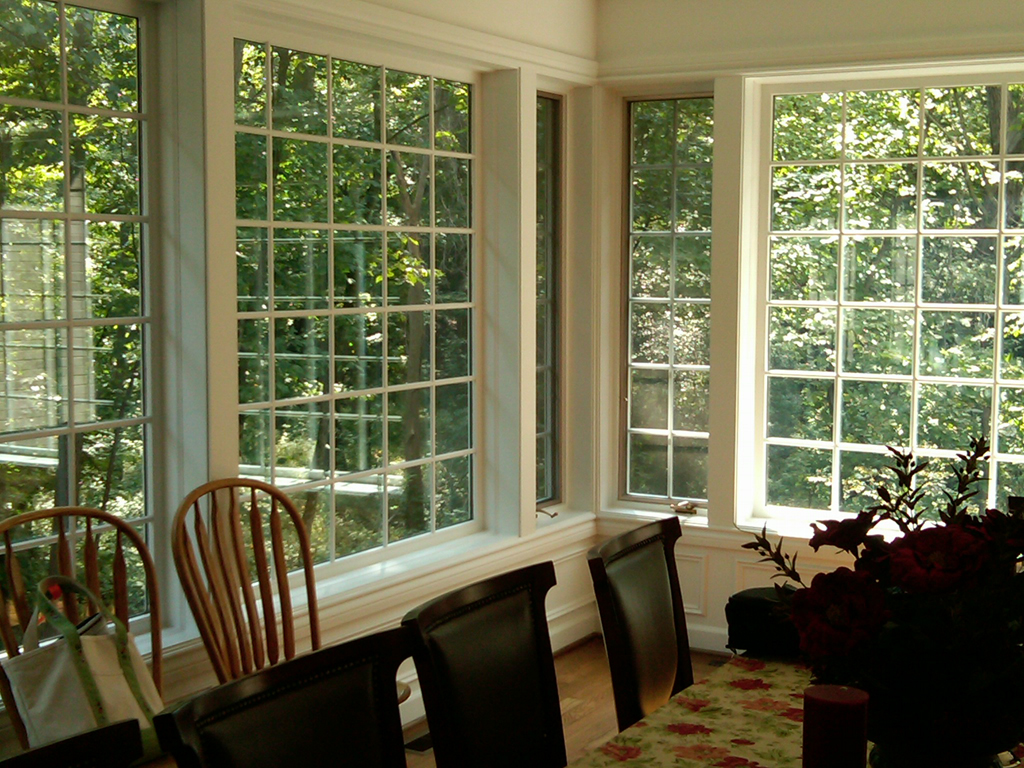“We live in a 1950s bungalow that was renovated (prior to our purchase) with lots of windows but without insulation. In our 110-degree-plus weather, the family room is a brutal place to be. We’ve got wood blinds and curtains, and we even hang a tarp outside every summer, but we just can’t seem to keep it cool. Can you help?” —Kat Sabine, via Facebook
That’s hot. But not like sexy hot—like sweaty hot. Which isn’t really all that hot; it’s just uncomfortable. If you want to reduce the uncomfortable kind of hot, I can help you (but if you want advice on reducing the sexy kind of hot, well, I just don’t have any experience with that…wink, wink).
The brutal temperature in your family room is caused by solar heat gain. Basically, the sun is blasting your house, heating it up like an oven, and baking you like a potato. In order to reduce your solar heat gain, you’re best off taking a tandem approach: Block the sun from the exterior, and reject it from the interior. There are a number of ways to do both. I’ll give you some ideas, but you’ll have to come up with your own magic cocktail based on your specific situation.
The first thing you should do is spend a little time studying how the sun hits your house—most importantly your windows. Not surprisingly, the windows are where most of the action is taking place. But you don’t necessarily have to cover them head-to-toe in turtlenecks and long skirts to tone things down. Nope, scant and see-through is the new cool.
The Yard
Option 1: Plant shade trees. I think this should definitely be part of your long-term plan. I love this option because it’s the most organic and, if you do it right, it’ll add value to your lot in a majestic way. The keys are to pick the right species, place them appropriately, and maintain them properly so that they will live long, healthy, happy lives. If you’re in a hurry, you can buy and plant large trees that will provide some imme-diate relief. If you can handle waiting a year or two, then you can, very economically, get a mix of smaller fast-growing and slow-growing shade trees. The slow-growers tend to have a more stable existence over the long-term, but the fast-growers (the weaker of the two) can buy you some time for the slow-growers to mature, and then be cut back as needed.
The best shade trees are tall, sturdy, and longer-living than you, so they require some careful forethought. Make sure to choose ones that are hardy to your climate, soil conditions, and sunlight exposure. Take a look around the neighborhood: Which trees seem to be flourishing? Strike up conversations with your handsome-shade-tree-owning neighbors and suss out the pros and cons of each kind. Contact local nurseries, landscapers, and arborists to learn which trees are resistant to pests and diseases and to get advice on placement. Remember to allow enough room for them to grow to their full size without being crowded. You don’t want the spread of branches to cause too much trouble above ground, but you also don’t want the roots to wreak havoc below.
Check the BHG Plant Dictionary for plant options.
Option 2: Erect a pergola or arbor. A well-placed pergola or arbor next to the house can add architectural interest. Plus, it can be used to delineate outdoor living space. Cover it with climbing plants and vines, and you’ve bought yourself a lot of quality shade—good for both cooling your house and relaxing in a place in which you “have it made.”
Option 3: Build a vertical garden. Yay, I love the idea of a vertical garden! Take all that sunlight that’s beating down on your house and use it to grow food to cook (instead of letting it cook you). It can be a lovely view from your windows, and it won’t prevent ambient light from keeping your house bright and happy. (I know readymade.com has some great ideas for vertical gardens.) Let me know when your produce is ready, because I have some good ideas for eating it.
Option 4: Use hedges or a trellis. I’m not a huge fan of tall privacy hedges. Too fortress-like. But medium-high hedges or a trellis oriented horizontally (like we talked about here) can do a great job of blocking the low eastern morning sun or the low western afternoon sun. Plus, they make great borders.
The House
Option 1: Seal and insulate. Actually, this is not an option; this is mandatory. Any and all efforts you make to cool the house will be greatly enhanced by taking this measure. Not doing it is almost the same as throwing money out the window. Go to energystar.gov and check out “A Do-It-Yourself Guide to Sealing and Insulating with ENERGY STAR.”
Option 2: Install awnings. Awnings work on south-facing windows because they block the direct overhead sun; they work on west exposures because they can reduce solar heat gain by 77 percent. Shutters are an option, but I don’t like darkening the room that much. I much prefer to have daylight light the room when possible, rather than relying too heavily on lightbulbs.
Option 3: Install solar shades. Wow! Have you seen what the windows are wearing these days? There are some seriously see-through, light-letting-in, view-having shades out there that also happen to reject a lot of the UV and infrared nastiness that the sun tries to force on you. Truth is, shades or blinds help in general, especially if they’re installed tightly inside the window frame so that they cut down on airflow around them. I just happen to prefer the kind that allow me to look out my window, so I can see how bright the future is, you know?
Option 4: Apply spectrally selective window film. Now don’t go getting pictures of bubbly, crooked, purple tinting in your mind. That’s so ’90s. Window films have come a long way. Clear films like 3M Prestige Series – PR 70 let in a very high percentage of light while blocking a massive amount of the sun’s heat. They’re almost im-perceptible, making your view just as pretty as it was before—to both you and the Peeping Toms who, of course, are still interested in all that hot window action.
There. Hope this helps!
P.S. My personal solar heat gain reduction cocktail is: 2 parts shade trees, 1 part seal and insulate, 1 part 3M window film. Serve over rocks in a highball glass, and garnish with a sprig of mint and a sliver of hot pepper. Enjoy.
For more info visit Midwest Solar Control!

